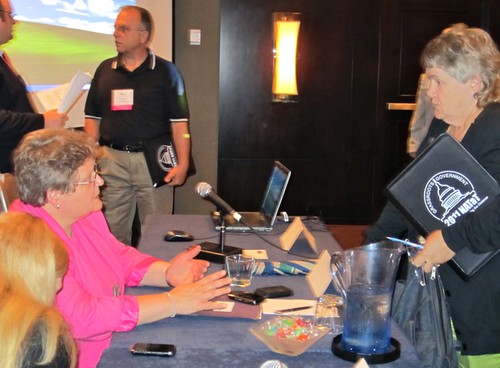“Small towns and rural communities need assistance from USDA Rural Development, now more than ever.” That was the consensus of attendees participating in a breakout session at the National Association of Towns and Townships (NATaT) annual meeting in Washington in early September. During and after the session Deputy Under Secretary for Rural Development Cheryl Cook heard accounts of how local Rural Development staff have made a difference in the economic health of rural communities in states including Illinois, Indiana, Michigan, Minnesota, New York, Ohio, Pennsylvania and Wisconsin.
Many described the positive impact of investments made through the American Recovery and Reinvestment Act over the last two years, but expressed concern for the future. Water systems, broadband access, and fire and rescue capabilities were frequently cited as critical foundational investments every community needs. But many said finding private partners willing to lend on affordable terms is a challenge for smaller communities that have a limited tax base.
A number of elected officials said that increasing the availability of private capital for existing and start-up businesses, improving educational and healthcare opportunities, and helping develop renewable energy options were all key to strengthening local economies through diversification.
Many also praised the local knowledge and accessibility of RD’s network of staff members who regularly visit nearly every county in the nation. “Most of us have full time day-jobs and serve our communities as best we can,” explained one local leader from northeast Pennsylvania. “Without the technical assistance from our regional Rural Development Office I doubt we could get through the application process successfully. And that’s assuming we could even keep track of when funding is available for the infrastructure our town needs.”
Cook described Rural Development as, “Three agencies on a mission, using loans, loan-guarantees and leveraging grants,” to make it affordable for small towns to keep up with advances in technology, provide necessary infrastructure, and to attract the pool of business investment capitol often taken for granted in larger cities.
“One of the great things at Rural Development is that we make it affordable for rural communities to help themselves,” she said. “And by being hands-on from the start, we set them up for success.”
According to Cook that means nearly all the investments RD makes get paid back with interest. “So, even as budgets get tighter, the capacity of our community facilities programs is able to grow to meet the needs of the many small towns struggling to survive.”
“We want to Rural America to do more than just get by; we want these communities to thrive as the American economy recovers,” said cook.
To find out more about how USDA Rural development programs can assist your community, Click Here.



